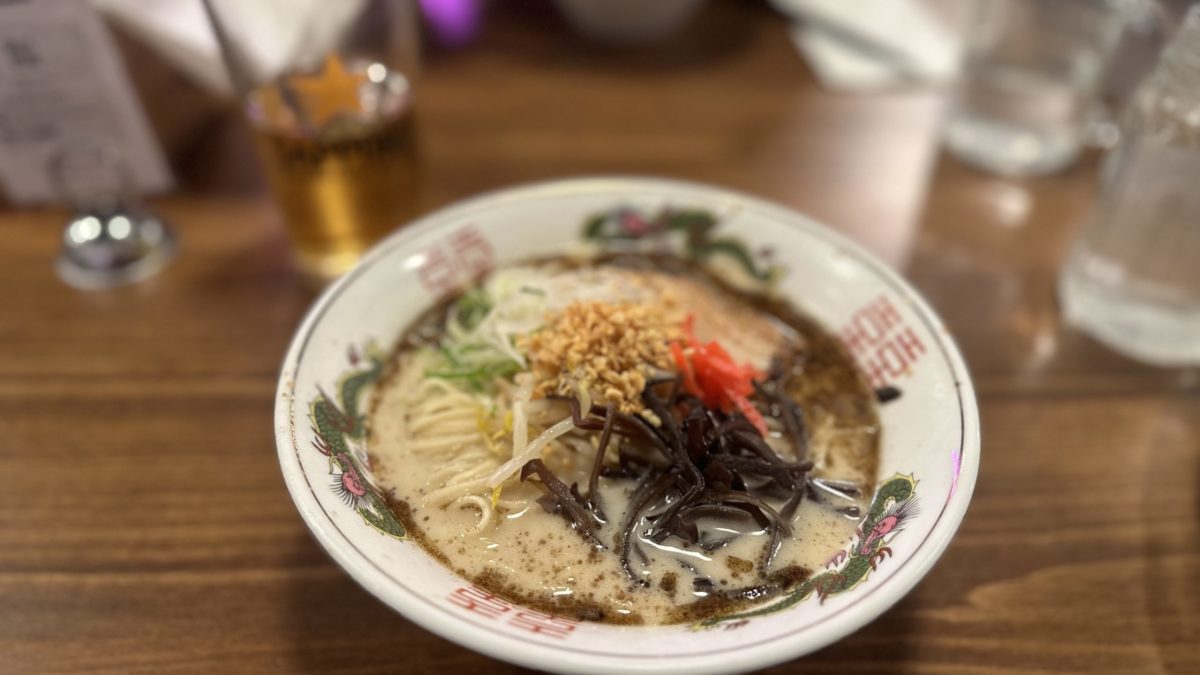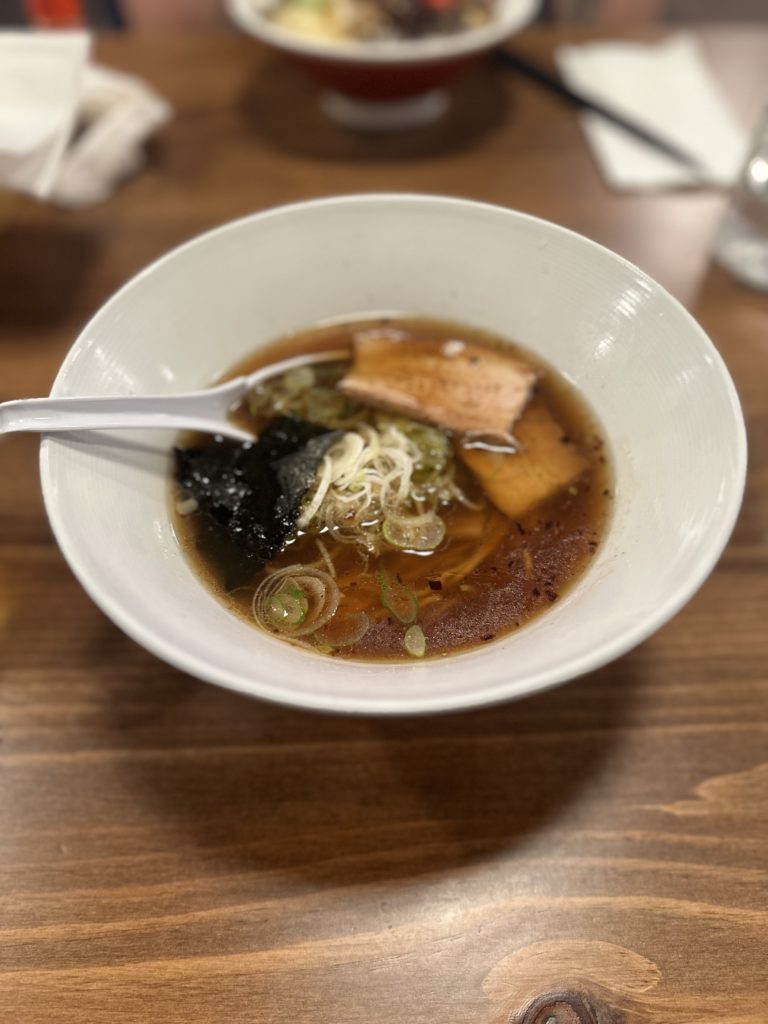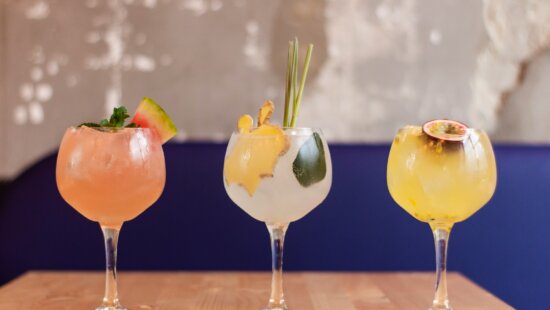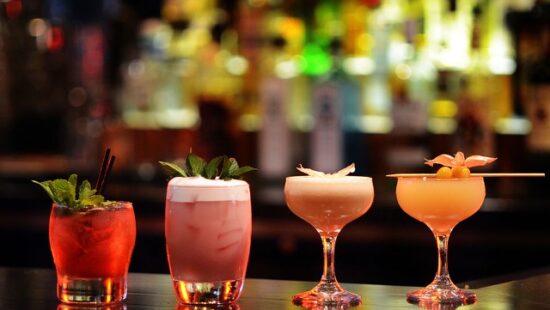Sponsored
Hana Ramen pursues perfection with hand-made, clean ingredients

Hana Ramen owner and chef Mike Harrison creates only authentic dishes, like the B.G.O. Ramen with tonkotsu broth, black garlic oil, sesame seeds, chashu, kikurage, scallions, fried onion, pickled ginger, and cilantro. Photo: TownLift // Meredith Kluever.
PARK CITY, Utah — In a tucked away location in Kimball Junction, is Hana Ramen, which opened just over a year ago by ramen enthusiast turned-professional Mike Harrison. Now, on a random Monday evening, a steady stream of diners comes in and takes their seats.
Before Hana Ramen, he was in IT and telecom and owned a few businesses. After selling one of his businesses, he said, “why not just go for it? With zero culinary experience, but I fell in love with ramen.”
It’s clear from talking with Harrison, that he’s dedicating 14-16 hours a day, six days a week, to a passion. Hana Ramen exists to offer Americans a taste of truly authentic ramen.

“Our process is kodawari, which basically translates to the pursuit of perfection,” Harrison said. “We’re trying to make something better than we made yesterday for today. If we just want to make money and have a restaurant, we’d use pre-made everything and be like everybody else. That’s not what I want to do. It’s really a passion project because real ramen is so so good. And I really want people to experience that.”
Almost everything is handmade at Hana. The bone broth is pressure cooked for 6-8 hours from 170 pounds of pasture-raised pork bones, sourced locally.
An in-house noodle maker produces a few kinds of noodles for different ramen styles. Noodles take hours to make and need to rest overnight, to give the gluten structure and relax for its perfect chewy texture.
Tare, essentially a concentrated flavor agent, is also made in-house which is very rare in the U.S. Tare takes many hours to make, then it rests and flavors meld for about a week.
“Everything with ramen is labor intensive, which is why most ramen in the United States is either partially premade or all premade,” Harrison said. “We’re one of the few that makes 100% of everything in-house from scratch. We have to plan everything a day or two in advance.”
A bowl of ramen has layers; it’s not just broth noodles and some other toppings. There are three basic broth styles from which ramen is built: shio, a salt-based broth; shoyu, a soy sauce-based broth; and miso, a fermented soy bean based broth.
From the broth foundation is the tare which is the flavor bomb and aromatic oils (garlic, truffle, green onion, chili). Unlike Western broth, aromatics and strong flavors are not combined during the cooking process.
Lastly, the toppings like chashu pork belly and braised meats are marinated for days before reaching your bowl.
There are very few items not made by Hana, like the imported Japanese flour (which can be more tolerable for gluten-sensitive diners), specialty dried fish, and barrel-aged shoyu that makes up about 1% of soy sauce production in the world, according to Harrison.
Ingredients sourced locally, like meats, oils, vegetables, must clear Harrison’s quality expectations.
“Come spring, we’re going to use [Old Home Place] exclusively for our meats and our bones because everything is pasture raised,” he said. “Everything is real. There’s no garbage. There’s no antibiotics. There’s none of that trash. I really want farm to bowl concepts. I don’t want junk in my food.”
Ramen isn’t the only focus. Handmade gyoza, tofu curry, and tonkatsu is on the menu too. Harrison also rolls out specials on the weekends when he can dedicate time to each and every specialty bowl that leaves the kitchen.
“The menu has evolved as time goes on,” said Harrison. “I’m trying to convince people [to try] different types of dishes that I personally like. People like dipping ramen, which surprised me because there’s a strong fish element which for Utah people that’s kind of a hard sell.”
Harrison found his love for ramen only about five years ago. When he and CC, his wife and business partner, travel they seek out the best ramen at their destination. His personal favorite Hana Ramen bowl is the chicken shoyu.
COVID foiled many plans, including Harrison’s to go to Tokyo and learn under mentor, chef Koitani. Instead, he learned over Zoom until he was able to spend two and a half weeks in Tokyo refining his skills.
“The whole reason we’re doing this is because I want to bring excellent ramen to Utah.”
View this post on Instagram


















